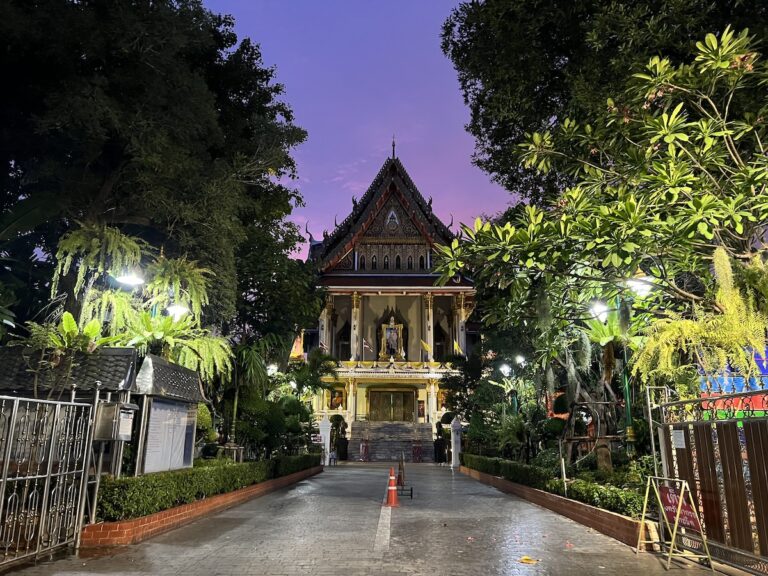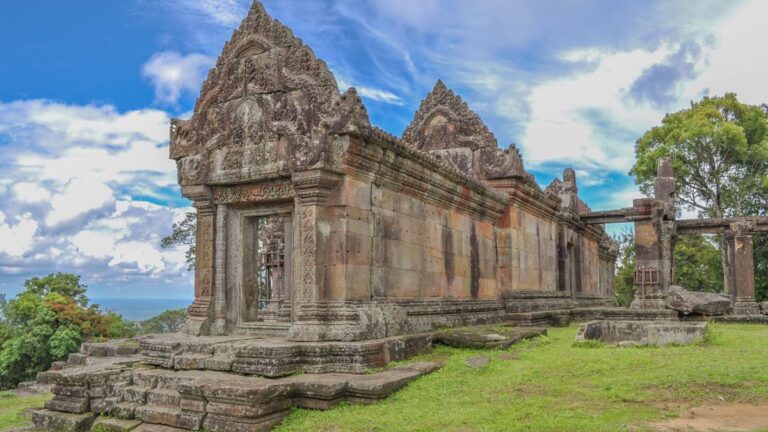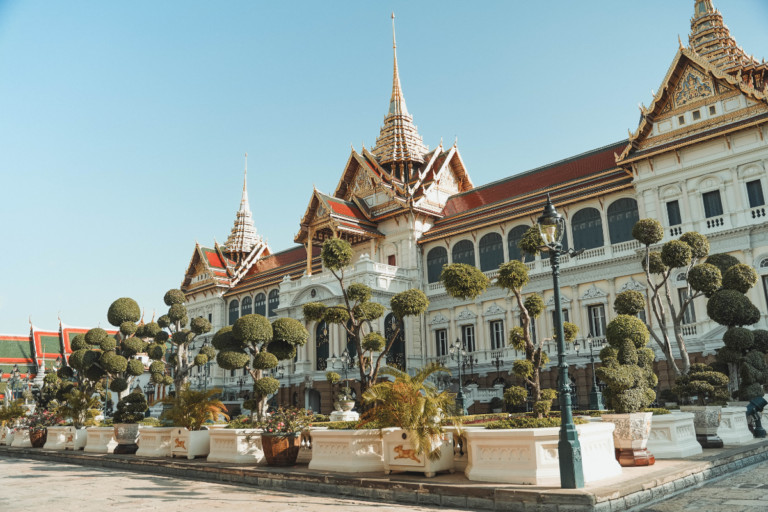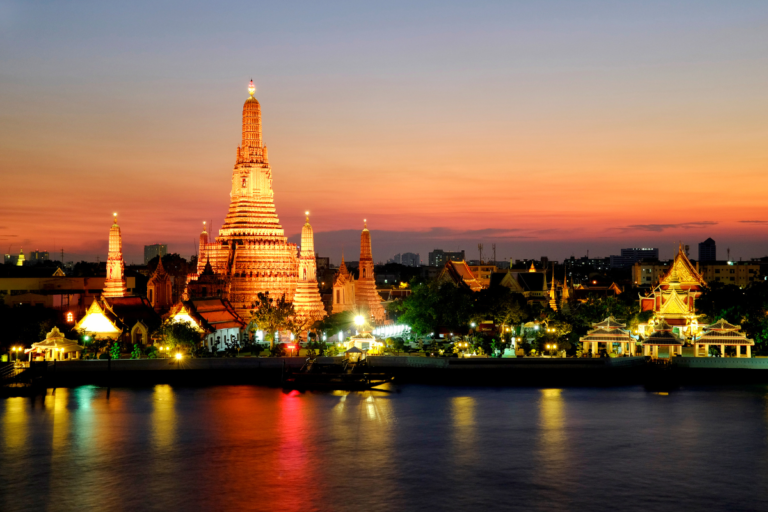Buddhism in Thailand
Around 95 percent of the people who live in Thailand are Buddhist, and Buddhism plays an intrinsic role in the lives of most people here. There are special Buddhist customs and rituals that can be seen in all aspects of Thai life, and visitors who truly want to gain an understanding of Thai people and culture should start by studying Buddhism. Here is a brief beginner’s guide to Buddhism in Thailand.
Origins of Buddhism in Thailand
The type of Buddhism that is practiced in Thailand comes from the Theravada school, which is derived from the Buddhist movement that was established by Siddhartha, who later was known as Lord Buddha, in the sixth century.
He formed the concept of the Middle Way, which relinquishes the extremes of self-mortification and sensuality in order to achieve a sense of oneness. The ultimate goal of Buddhism is obtaining enlightenment and nirvana and ending individual pain and suffering by eradicating desire and craving.
Therefore, Buddhists are encouraged to live modestly and moderately, focusing on the inner world and obtaining a sense of balance with it. While meditation features highly in Theravada Buddhism, the temple also plays a central role.
Visiting the Temple
Buddhist temples are known as wats in Thailand and can easily be recognized by the distinctive sloped roofs that are usually decorated with glittering red and golden tiles and large serpents at each corner. When visiting the temple, it is best to dress modestly and remember to take your shoes off before venturing inside.
The country counts with approximately 30,000 Buddhist temples, each one with its own unique style and story.
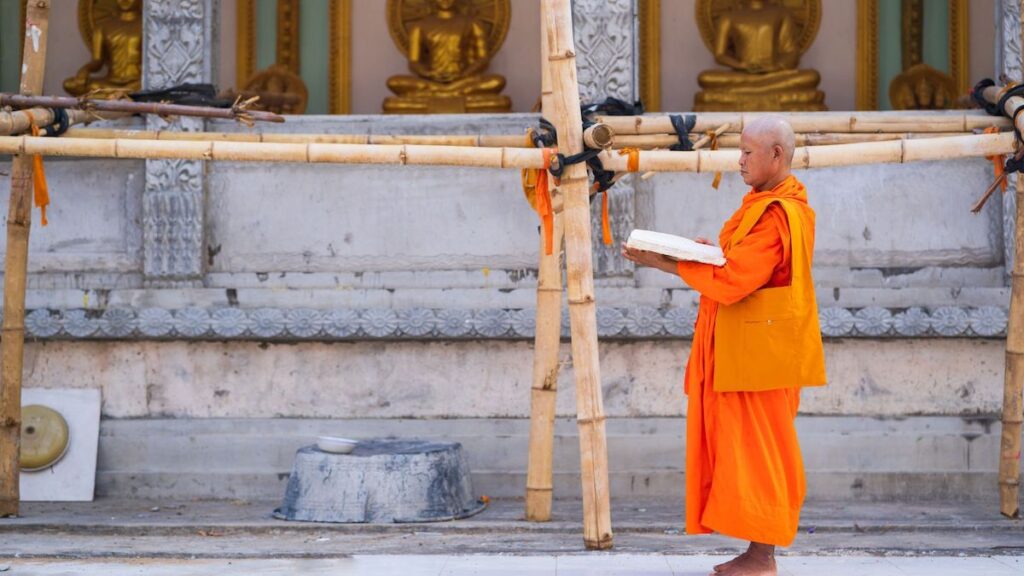 Most people purchase either incense or lotus flowers from one of the special stalls that can be found on the temple grounds. Enter the temple in silence and avoid touching any of the statues or special Buddhist symbols. Visitors then kneel before the central Buddhist icon and place either their flower or incense at the base of the icon as an offering while silently reciting a Pali chant.
Most people purchase either incense or lotus flowers from one of the special stalls that can be found on the temple grounds. Enter the temple in silence and avoid touching any of the statues or special Buddhist symbols. Visitors then kneel before the central Buddhist icon and place either their flower or incense at the base of the icon as an offering while silently reciting a Pali chant.
Making Merit
Known as tam boon, making merit is an important part of Buddhism in Thailand. This is the concept of collecting good deeds as well as acts and thoughts that can be taken on into the afterlife or the next reincarnation to ensure that the Buddhist advances up the spiritual and evolutionary ladder.
Making merit is essential for Buddhists, as it is believed that those who have not accumulated enough merit in their lives and have done bad deeds instead will be punished by being reincarnated as a human with physical flaws or a lower form of life altogether. There are a number of different ways to make merit, such as presenting alms to monks, visiting the temple, and releasing caged birds.
Role of Thai Monks
Like in other Buddhist nations, the monks of Thailand are responsible for conveying and preserving the teachings of Lord Buddha. Monks must memorize special scriptures, which are chanted on ceremonial occasions such as the opening of a new business, a marriage ceremony, or any other type of blessing.
Most special occasions are marked in Thailand with a Buddhist ceremony. Groups of monks are invited to watch over these occasions and lead participants in chants.
Becoming a Monk
Most Thai men become a monk at some point in their lives, and this is usually done before the age of 20, although some people do this much later in life. The most common time to become a monk is during the three-month rainy season, which is known as Khao Phansa. In order to become a monk, participants much go through a special ordination ceremony, which is witnessed by friends and family in the temple of their choice.
In the first stage of the ceremony, the participant must have all of the hair removed from their heads, including their eyebrows. Family and friends take it, in turn, to snip away a lock of hair, after which time one of the temple’s senior monks will shave away the remaining hair.
After the participant has donned special robes, they lead a procession around the temple grounds. Everyone chants a special song, then pauses to catch the small packets of money that are thrown by the novice monk as a tribute. The novice then enters the temple in order to complete the final stage, which involves reciting a special prayer and answering questions in Pali.
With an estimated 300,000 practicing monks residing throughout the nation, these spiritual figures play an instrumental role in Thai society, guiding their followers on a path toward inner peace and enlightenment.
One of the most interesting things about Thai Buddhism is that, unlike many other religions, it is open to people from all walks of life, no matter their age, sex, or former faith. A large number of Westerners have even decided to become monks during their stay in Thailand for either a short or long period, and this is a particularly common practice among Westerners who plan to marry a Thai woman. Those who wish to take on a position of authority are also often expected to serve a period as a monk beforehand.
There are also Buddhist nuns who, like the monks, also have shaved heads but can easily be distinguished by their white robes. There are far fewer nuns in Thailand than monks, and their status in Thailand is much lower than that of monks.
Buddhism in Society
Buddhism is deeply rooted in Thai society, and its influence is evident in their festivals and traditions. Songkran or the Thai new year is a festival celebrated in April, where people splash water on each other as a symbol of purification, renewal, and the washing away of sins. Another festival, Loy Krathong, takes place during the full moon in November – this is also known as the festival of lights. During Loy Krathong, Thai people release floating lanterns into the sky, which signifies the release of negative energy and the welcoming of positive energy in the new year.
Buddhism is not only about temples, but it is also a way of life. Local shops, street stalls, or markets selling amulets, charms, and trinkets are a common sight in Thailand. Thai people believe these amulets bring good luck, keep evil away, and provide protection. Even if you don’t believe in the powers of these lucky charms, it is worth checking them out for their intricate designs and historical significance.
Frequently Asked Questions about Buddhism in Thailand
1. What is the official religion of Thailand?
The official religion of Thailand is Theravada Buddhism; Islam, Hinduism, Sikhism, and Christianity are also officially recognized. This form of Buddhism emphasizes the importance of individual insight and meditation and is considered the most conservative of the Buddhist denominations. The Thai royal family has always been an ardent supporter of Buddhism, and the Thai King is considered to be the protector of the religion.
2. What percentage of the population practices Buddhism?
It is followed by approximately 95% of the population.
3. How did Buddhism come to Thailand?
Buddhism came to Thailand over 2000 years ago, through merchants and traders from India. However, it wasn’t until the 13th century that it became the dominant religion under the reign of King Ram Khamhaeng. The religion was further propagated under the reign of King Naresuan, who was a devout Buddhist and encouraged the construction of many temples.
4. What are the main tenets of Buddhism?
The main tenets of Buddhism include the Four Noble Truths, which state that life is suffering and that suffering originates from our attachment to things that are transient and impermanent. Buddhism teaches the importance of mindfulness, meditation, and compassion toward all living beings. In Thailand, Buddhism is also closely intertwined with animism, where spirits are believed to inhabit both living and non-living things.
5. What are some of the most popular Buddhist temples in Thailand?
Some of the most popular Buddhist temples in Thailand include Wat Phra Kaew, known for its revered Emerald Buddha statue, and Wat Arun, famous for its stunning riverside pagoda. The Wat Pho is home to the biggest reclining Buddha in the country, and the historic Wat Mahathat boasts an iconic Buddha head entwined within the roots of a banyan tree. Ayutthaya temples are also some of the most-visited in the country.
6. What is the “Wat”?
The “Wat” in Thailand refers to a Buddhist temple or monastery. These religious sites serve as places of worship, learning, and social gathering. Each Wat has a unique design, with intricate carvings, sculptures, and wall murals. Many Wats offer meditation retreats for visitors who wish to experience the practice firsthand.
7. What is the difference between a monastery and a temple?
The “Wat” in Thailand refers to a Buddhist temple or monastery. These religious sites serve as places of worship, learning, and social gathering. Each Wat has a unique design, with intricate carvings, sculptures, and wall murals. Many Wats offer meditation retreats for visitors who wish to experience the practice firsthand.
There’s a distinction between a monastery and a temple in Thailand. A monastery, or “Wat Pah”, is a place where monks reside and devote their lives to Buddhist practices. It’s a serene and secluded site, where meditation is the primary activity. On the other hand, a temple, or “Wat Luang”, is a place of worship for the laypeople, with monks serving as spiritual guides.
8. How can I learn more about Buddhism in Thailand?
If you’re interested in learning more about Buddhism in Thailand, there are many ways to go about it. You can visit a local Wat and speak to the monks, take a meditation retreat, or volunteer at a Buddhist organization. You could also read books on Buddhism, attend talks and workshops, and immerse yourself in the local culture to gain a deeper understanding of the religion.
Final Words
Buddhism plays a significant role in Thai culture and daily life. It offers a glimpse into the country’s rich history as well as the traditional beliefs of the people. A visit to Thailand is incomplete without exploring the fascinating world of Buddhism. Visiting Buddhist temples, shops selling amulets, and attending festivals and meditation retreats are some of the ways you can experience the Buddhist way of life. Let the rhythms and rituals of Buddhism guide you, and you’re sure to leave Thailand feeling spiritually enlightened and culturally enriched.


